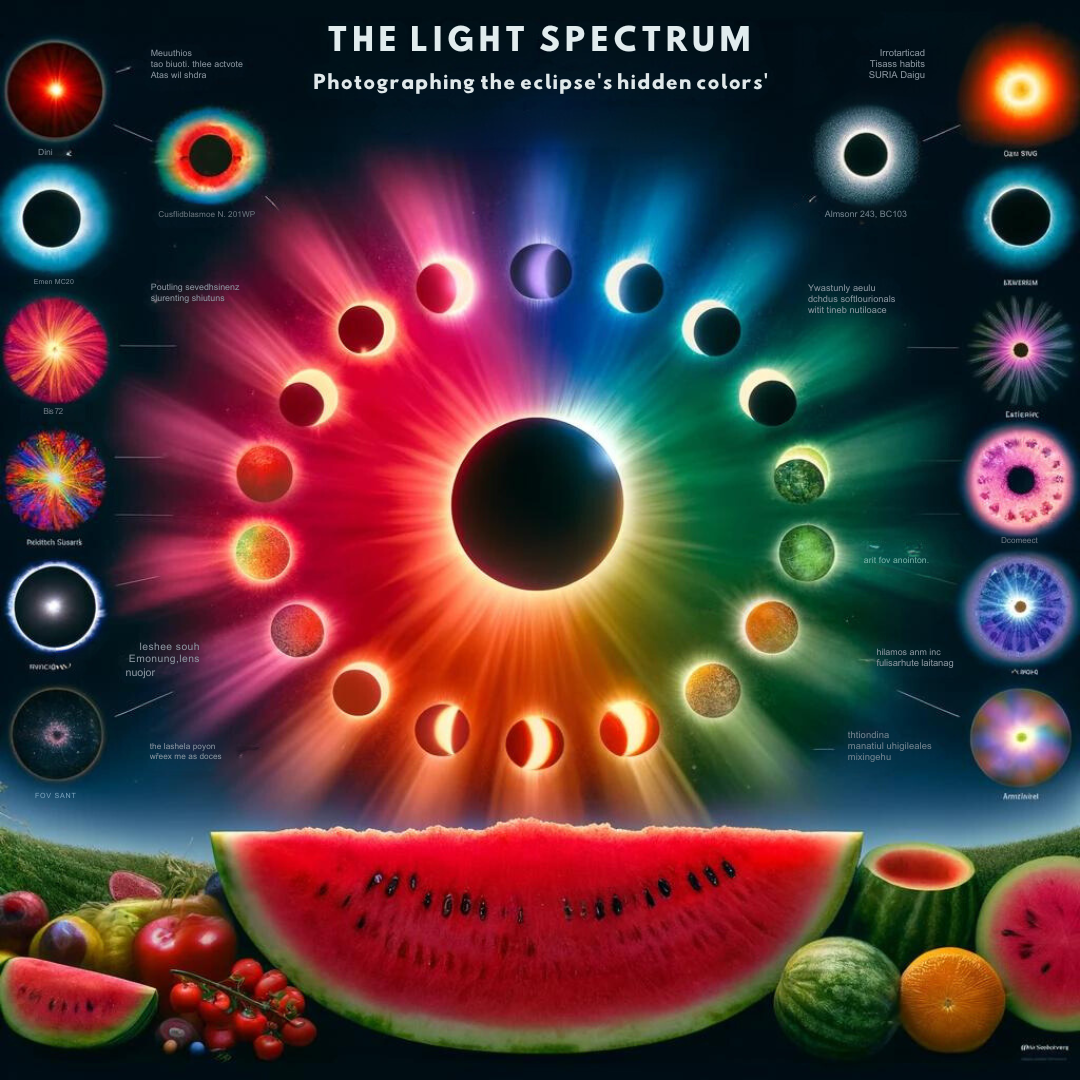
The light spectrum is a fascinating subject to explore. From the familiar rainbow to the subtle shifts in colors within an eclipse, the spectrum of visible light carries a nearly endless array of captivating shades and hues. In this article, we’ll explore the light spectrum, focusing on how it can be used to photograph the hidden colors of an eclipse.
Understanding the Light Spectrum
The light spectrum is a range of electromagnetic radiation that can be divided into several categories. The most familiar part of the light spectrum is the visible spectrum, which ranges from approximately 400 to 700 nanometers. This part of the spectrum is responsible for producing the colors we see in the world around us, including rainbows and other natural light effects.
Above and below the visible spectrum are the ultraviolet and infrared spectra. These regions of the light spectrum extend beyond the range of the human eye and are typically used for specialized purposes, such as detecting counterfeit money and tracking satellite data.
How Eclipse Can Produce Hidden Colors
An eclipse occurs when the moon passes in front of the sun, either partially or completely covering it. This event can result in some incredible light effects, including the appearance of hidden colors within the light spectrum.
As the moon passes in front of the sun, the light coming from the sun becomes partially or completely obscured. This can result in subtle shifts in color, as certain wavelengths of light are absorbed or reflected by the moon’s surface. In some cases, the eclipse can even produce unexpected colors and patterns, which can be captured through the use of specialized photographic techniques.
Capturing Hidden Colors with Eclipse Photography
To capture the hidden colors of an eclipse, photographers can use a combination of specialized techniques and equipment. One of the most popular methods is to use a solar filter, which blocks out the majority of the sun’s visible light. This filter allows photographers to capture the subtle changes in color produced by the eclipse, without being overwhelmed by the brightness of the sun.
Another popular technique is to use high-speed film or digital photography, which can capture the rapid changes in color that occur during an eclipse. High-speed film can be used to capture individual frames over the course of the event, while digital photography can produce time-lapse videos that show the ebbs and flows of color as the eclipse progresses.
In some cases, photographers can use specialized filters and lenses to capture the unique colors produced by an eclipse. Ultraviolet and infrared filters can be used to capture wavelengths of light beyond the limits of the human eye, while wide-angle lenses can be used to produce panoramic shots that capture the full spectrum of colors produced by an eclipse.
Conclusion
The light spectrum is a fascinating subject to explore, and eclipses offer a unique opportunity to capture the hidden colors produced by this part of the electromagnetic spectrum. By using a combination of specialized equipment and photographic techniques, photographers can capture the subtle shifts in color produced by an eclipse, resulting in truly stunning photographs. Whether you’re an amateur photographer looking to capture the beauty of an eclipse, or a professional photographer looking for unique subjects, the light spectrum offers an endless source of inspiration.
